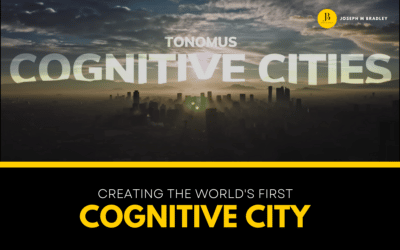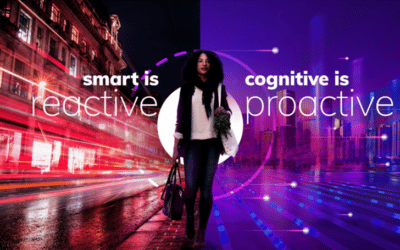I’ve spent the majority of my career in VP or C-suite roles and let me tell you… you don’t want to fail fast. In fact… YOU DO NOT WANT TO FAIL. PERIOD.
We hear it all the time, in Silicon Valley and elsewhere: let’s fail fast.
It’s all about failing fast.
And it’s one of my biggest pet peeves.
Because, truly, who wants to fail fast?
You don’t want to fail slow, but you also don’t want to fail fast.
Let me tell you what failing fast really is: if you continue to do the same thing over and over and over again.
That’s failing fast, and you don’t want it.
What you want instead is to improve your rate of learning.
That’s the real secret that you’re after.
Let me share a story that I tell often. In 6th or 7th grade, I was playing basketball in an all-star game. For the first time, I was playing a boy as fast as I was, and he was left-handed. At the end of the first half, his team had 20 points, and we were playing only a 12-minute half. So as you can imagine, the kid was pretty good.
At halftime, my dad asked me, “Hey, have you figured it out yet?”
I looked at him blankly.
I’d been failing fast for the whole game.
Remember, the boy was left-handed. I was used to taking away the right hand and giving the left. Every time I jumped right, he’d go left behind me and score from the left. But for the life of me, I just couldn’t see it. I wasn’t learning fast enough.
My dad explained the situation to me, and the boy got just six points in the second half. But it took me a long time to learn how to respond and react. If I would have had a faster learning cycle, we could have won that all-star game, right?
If you extrapolate my experience to business, it is not about simply failing fast. It is all about improving your rate of learning.
So, how do you improve your rate of learning? Take these three steps.
#1. Build Your Listening Infrastructure
What does it mean to build your listening infrastructure? It means understanding who or what you’re listening to – your listening sources.
Most people have two or three listening sources.
Maybe one of them is the customer service department within a company. The other could be something like social media. One that I am pretty familiar with is the enterprise resource planning, or ERP systems. An ERP system is a business process management software that allows an organization to use a system of integrated applications to manage the business and automate many back office functions related to technology, services and human resources. Or, it might be your human intuition, your gut feeling. And, it’s typically one member of your team whom you value highly. For the most part, those few sources pretty much make up a lot of leaders’ listening infrastructure.
What’s the problem with that? The problem is that you need to understand where your blind spots are in your listening infrastructure, which includes more than ERP systems and human intuition.
For example: are you listening to certain economic indicators? Are you listening to social media and a variety of experts within that social media? Are you listening to detractors within your organization? Are you listening to contextual data points – things that may not fit directly into what you’re talking about, but provide context? These points can be world events, world leaders – a variety of contextual information. Weather patterns might be a good source of contextual information. And look at macroeconomic indicators, satellite information, competitive information.
Michael Bruch, founder and CEO of the social platform Willow, spends a couple of hours daily keeping up with tech news on Twitter. “It’s not good to obsess over what other people are doing, but staying informed is certainly important,” he says.
For entrepreneur Ryan Holmes, paying attention simply makes sense: “I’m not saying leaders have to be experts in social media. But if there’s a communication channel where your employees, customers, competitors, investors, partners and stakeholders are all spending their time, shouldn’t you at least make an effort to be there, too?”
You can draw information from a variety of listening sources. So if you want to improve your rate of learning, the first thing you need to do is write down your listening sources. List the sources you have listened to before you make a critical decision or you think you’re going to make a critical decision. Look at the list and see where your gaps lie. We all have them.
What other listening sources could you potentially begin to listen to? You need a diverse group of knowledge bases to draw upon. Think about how your business might gain from current and anticipated circumstances. Then connect to the sources that will help you succeed, and start listening.
#2. Seek Out the Negative
Plain and simple, you’ve got to seek out the negative.
Earlier I mentioned the detractors in your organization. These can include We all have them and we all avoid them like the plague. We avoid them like the plague because they’re not going to get on board with our agenda. They’re going to come up with a variety of reasons to buck our plan, or they’re simply difficult to deal with. But you must include them.
There’s a power behind inclusion that can create giant leaps within innovation.
Inclusion involves these three key areas:
· Full participation – No matter who you are, you can be in the room. So by its very nature, inclusion means diversity of perspectives, backgrounds, and experience – the very things that can spark off each other to create new ideas and possibilities.
· Tools to participate – Inclusion means using data analytics to reach out and connect in a meaningful way, using data to make the experience enriching and productive.
· Next-generation collaboration – It’s one thing to say, “I’ve brought together 10 diverse individuals,” but it’s another thing to give them the tools they need and to have every single one engaged and contributing.
Inclusive decision making can bring about faster change and contribute to the bottom line, notes Erik Larson, founder of Cloverpop, a cloud app for better, faster decision making. His research indicates that inclusive teams make better business decisions up to 87% of the time.
“This research highlights the potential value of team diversity as a practical tool for architecting decision-making processes,” says Harvard Business School Professor Francesca Gino. “That our decisions get sidetracked by biases is now well established. While it is hard to change how our brains are wired, it’s possible to change the context of decisions by architecting the composition of decision-making teams for more diverse perspectives.”
There’s no doubt. Inclusion is a powerful driver of innovation. It’s not just the right thing to do – it’s a profitable thing to do.
The ability to bring together, engage and listen to a diverse group of points of view makes you smarter. It allows you to shrink or eliminate blind spots – again, you may not have even known you had them. That’s why they’re blind spots, right? If you don’t seek out the negative, you’ll never be able to uncover and see that blind spot. Seeking out the negative is critical to improving your rate of learning.
#3 Replace Debate with Action
Finally, you have to replace debate with action. Tom Chi, founder of Google X, tells a great story about the importance of rapid prototyping that is very relevant here.
Tom talks about the design phase of Google Glass. At the time, a lot of the virtual reality goggles on the market appeared to be really heavy. Tom’s team kept debating the right design for their product. Ultimately, Tom said, “We can stop debating and we can just figure this thing out.” He went and got some loaves of bread so he could use the wire from the bread bag clamps. His team took the wires and shaped some glasses. Then they got some clay and placed it on different points on the frames of the glasses. They had employees try them on and give feedback.
What the team found is that your human perception of how heavy a pair of glasses is comes from the perception of how much weight you sense through the bridge of your nose. That weight tells you, “Man, this is really heavy.” However, when the Google team moved the clay to the back of the earpieces, wearers sensed that the glasses were light on the bridge of their nose and said the glasses were very, very light.
Rather than debating for months, if not quarters, around what is the proper configuration, or where should the electronics go on Google Glass, the team went out and did it. They went to customers to ask, “Hey, does this work or not?” They tested it.
Here’s the point: when you want to improve your rate of learning, stop analyzing and go directly to the source of some of incredibly valuable information – your customers.
Think about it. Every large organization, every small organization, has access to customers every single day. Whether you’re working in the executive briefing centers that are now so popular, in large corporations or whether you’re a startup working in an incubator, your particular customers are all around you.
Kyle Wild, co-founder and CEO of Keen IO, an API platform, counts on Keen users to drive corporate decisions. The Keen platform was actually built to encourage user experimentation. “Most of the creativity is not on the payroll,” Kyle says. “There are tens of thousands of people from well over a thousand companies on a daily basis coming up with interesting ways to use our stuff that we didn’t think about.”
Navid Hadzaad, founder and CEO of GoButler, talks to at least one customer every day. “It’s by far the most efficient and productive way to gather feedback on [the company] and to understand the business more deeply. My company is nothing without its users, and the information I receive from customers is hugely influential on how we conduct business and shape our plans for the future,” he says.
I replaced debate with action in this scenario from personalized experience…
The ability to simply try something and see if it works or not is critical. But remember: you’re trying it to see if it works or not so you can improve your rate of learning. That is the focus. Your focus needs to be: “I want to be sure I’m prepared to understand, write down and ask the right questions so that I can capture the learning from my experiment.”
The learnings are what ultimately drive you to be successful. So stop debating. Stop analysis paralysis, get to action and test what you find with your user base. Doing it will improve your rate of learning, and you’ll learn the most important lesson of all in order to be successful in driving new products and new innovation. That lesson: stop failing. Stop failing slow, stop failing fast – but start learning.





